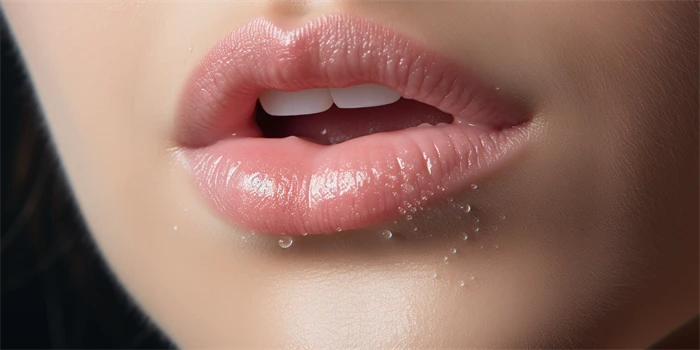Enhancing the beauty of one's lips has become increasingly popular in recent years, with many people opting for procedures like lip lifts to achieve a more youthful and balanced appearance. However, it is important to understand the art of lip lifts and how to avoid the 'overdone' look that can sometimes result from these procedures. In this article, we will explore various aspects of lip lifts, including the procedure itself, recovery, potential risks, and how to achieve natural-looking results.

The Procedure: What to Expect
A lip lift is a surgical procedure that involves removing excess skin from the upper lip to create a fuller and more prominent pout. During the procedure, the surgeon makes small incisions at the base of the nose, carefully removing the appropriate amount of skin to achieve the desired lift. The incisions are then closed with sutures, resulting in a well-defined upper lip.
It is crucial to consult with a skilled and experienced plastic surgeon who understands the intricacies of lip lifts. They will assess your facial structure and discuss your goals to determine the most suitable technique and amount of lift for your individual needs. This personalized approach ensures that the results are harmonious and natural-looking.
The average price for a lip lift procedure can range from $2,000 to $5,000, depending on various factors such as the surgeon's expertise, location, and additional fees for anesthesia or facility use. It is important to consider cost alongside the surgeon's qualifications and reputation when choosing a provider.
Recovery: Healing and Results
After undergoing a lip lift, patients can expect some swelling, bruising, and discomfort in the treated area. This is completely normal and can be managed with prescribed pain medication and cold compresses. It is recommended to plan for a few days of downtime to allow for proper healing.
During the first week of recovery, it is essential to follow post-operative care instructions diligently. This includes keeping the incision area clean and avoiding strenuous physical activities. As the weeks progress, swelling will gradually subside, and the final results of the lip lift will become evident.
It is important to note that every person's recovery process is unique, and individual results may vary. It is crucial to have realistic expectations and to communicate openly and honestly with your surgeon throughout the healing journey.
Potential Risks and Complications
Like any surgical procedure, lip lifts come with potential risks and complications. While these are rare, it is essential to be aware of them before making a decision.
Some potential risks include infection, scarring, asymmetry, and allergic reactions to anesthesia or sutures. Additionally, there is a small chance of nerve damage, which can result in temporary or permanent loss of sensation in the treated area. However, choosing a qualified and experienced surgeon greatly minimizes these risks.
Prior to the procedure, your surgeon will conduct a thorough evaluation of your medical history and discuss the potential risks and complications with you in detail.
Achieving Natural-Looking Results
One of the most common concerns surrounding lip lifts is the fear of ending up with an unnatural or 'overdone' appearance. However, with the right approach and skilled surgeon, natural-looking results can be achieved.
The key to achieving a natural result lies in finding the perfect balance between harmony and enhancement. This includes taking into account your existing facial features, lip shape, and structure. By carefully removing the appropriate amount of skin and strategically placing incisions, a skilled surgeon can create a lifted and youthful appearance that still looks natural and suits your overall facial aesthetics.
Avoiding the 'overdone' look also involves considering factors such as lip proportion, volume, and symmetry. Overfilling the lips may result in an unnatural appearance, so it is important to work closely with your surgeon to determine the right proportions and achieve a balanced outcome.
Communication is vital throughout the entire process. It is essential to have a detailed consultation with your surgeon, discussing your goals, expectations, and any concerns you may have. This ensures that you and your surgeon are on the same page regarding the desired outcome, resulting in more satisfying results.
Common Questions About Lip Lifts
1. How long do the results of a lip lift last?
The results of a lip lift are long-lasting, but they can be influenced by the natural aging process. It is essential to maintain a healthy lifestyle and follow any post-treatment care instructions provided by your surgeon to prolong the results.
2. Will a lip lift make my lips look unnatural?
When performed by a skilled and experienced surgeon, a lip lift can achieve natural-looking results. It is crucial to communicate your goals and concerns with your surgeon to ensure a balanced and harmonious outcome.
3. Is a lip lift procedure painful?
During the procedure, local anesthesia is administered to ensure you are comfortable and pain-free. Discomfort and swelling can be managed with pain medication prescribed by your surgeon during the recovery period.
4. How long is the recovery time for a lip lift?
The initial recovery period typically lasts a week, during which swelling and bruising will gradually subside. However, it may take a few months for the final results to fully manifest.
5. Can I combine a lip lift with other procedures?
Yes, a lip lift can be combined with other procedures such as lip augmentation or facelifts to further enhance your overall appearance. Consult with your surgeon to determine the best combination of procedures to achieve your desired results.
Finding the balance between enhancing your lips and maintaining a natural appearance is crucial when considering a lip lift procedure. By choosing a skilled surgeon, understanding the procedure and recovery process, and communicating openly about your goals, you can achieve natural-looking and satisfying results that enhance your overall facial aesthetics.



